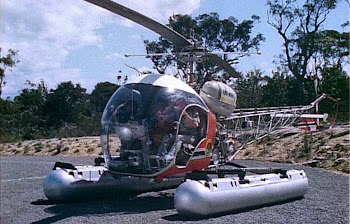Why is it that most of what has – and still is – being passed as aviation history in this country, has been written by amateur historians? I use the term [amateur] unpregoreatively here, since it is the case that few of our published authors have formal training, qualifications – or experience – as either professional historians, or writers. What has been published to date (including that bicentennial epic, Flypast) has mostly involved the assembly, ordering and reporting of facts.
Only occasionally, as with Steve Birdsall’s Flying Bucanners, and John Gunn’s Qantas trilogy, have we seen aviation writers move authoritatively beyond this reporting style to produce contextualised analysis and reinterpretation. As professional historians, the latter have used facts to create new knowledge and understandings capable of withstanding sustained critical – and peer – review, and capable too of stimulating broad discussion and interest beyond the immediate aviation historical community (and beyond the year of publication).
The importance of the enthusiast cannot be understated here however since it was their enthusiasm and fastidious reporting, which partly helped generate the broader popular, professional and academic interests now appearing.
The Aviation Historical Society of Australia Inc. has been largely resposnsible for nurturing these amateur publishing interests during the last half-century, assisted by various commercial (David Wilson) and private interests (Fred Morton, Terry Gwynn Jones).
These were followed in the 1980s by a new kind of author, the salaried public servant often working in a full-time professional capacity within organisations that gave them unfettered access to primary source material. At least some of these ‘second wave’ aviation historians had also benefitted from tertiary sector reforms – initiated the previous decade – by acquiring undergraduate and postgraduate qualifications. These ranks included journalists (Tim Bowden), curators (Mike Nelmes) and historians (David Wilson), employed by organisations such as the Australian Broadcasting Corporation, the Australian War Memorial, and the Department of Defence.
While interest has broadened since then to include mainstream academia, we have yet to see any substantial publishing benefit. One can count on one hand almost the number of Australian doctoral dissertations completed in recent decades that concern aviation history, or heritage. Leigh Edmonds was one of the first historians to venture in this direction, his Western air ways making aviation in Western Australia 1919-1941 having been completed in 1991. It was seventeen years later that Prudence Black’s Lines of flight: the design history of the Qantas flight attendants’ uniforms followed – in 2008 – heralding a seismic shift in both the direction and production of Australian aviation history. No longer was it being written by men, exclusively for men. Maxine Dahl’s Air evacuation in war: the role of RAAF nurses undertaking air evacuation of casualties between 1943-1953 also appeared the following year.
More recently we’ve seen Michael Monkentin’s Australia, the Empire and the Great War in the Air (2013), the appearance this year of Ndeayo Uko’s In the name of the fathers: a documentary narrative of the Biafra airlift suggesting a fascinating new direction for our aviation historians.




![This unusual piece of early Australian [aeronautical] silverware realized $4,700 at auction in Sydney earlier this week, selling for more than three times its estimated reserve.](https://assets.aeromuseums.org/2015/09/1920-N.S.W.-Aerial-Derby-Cup-219x300.jpg)
